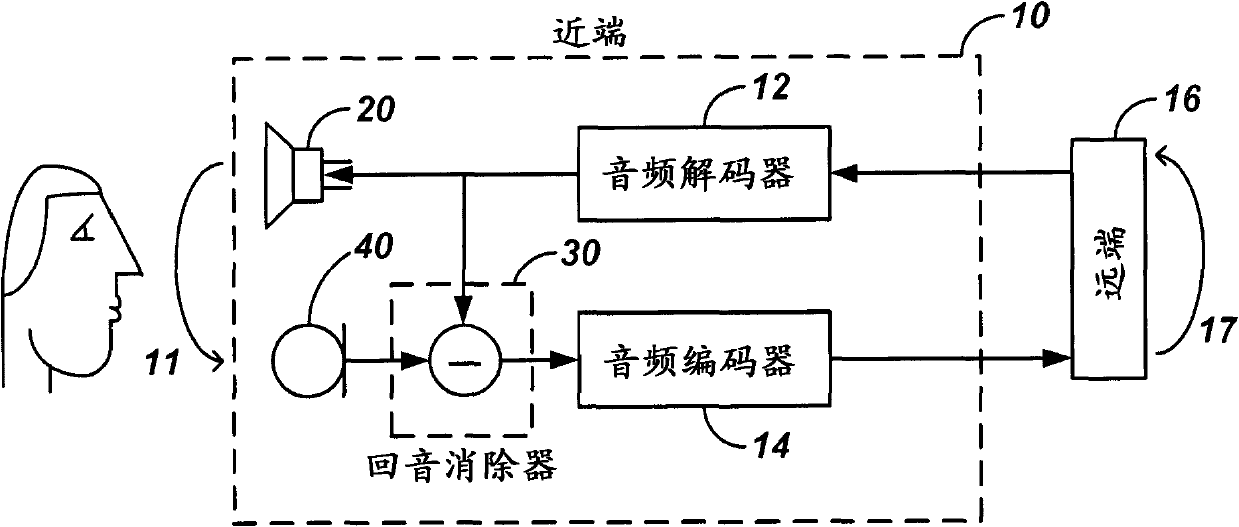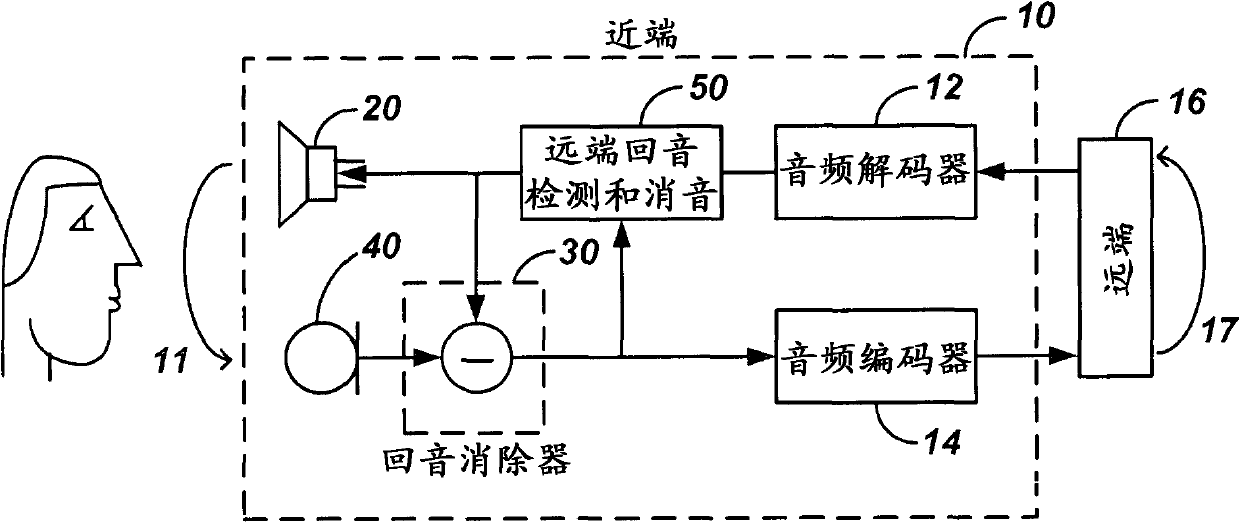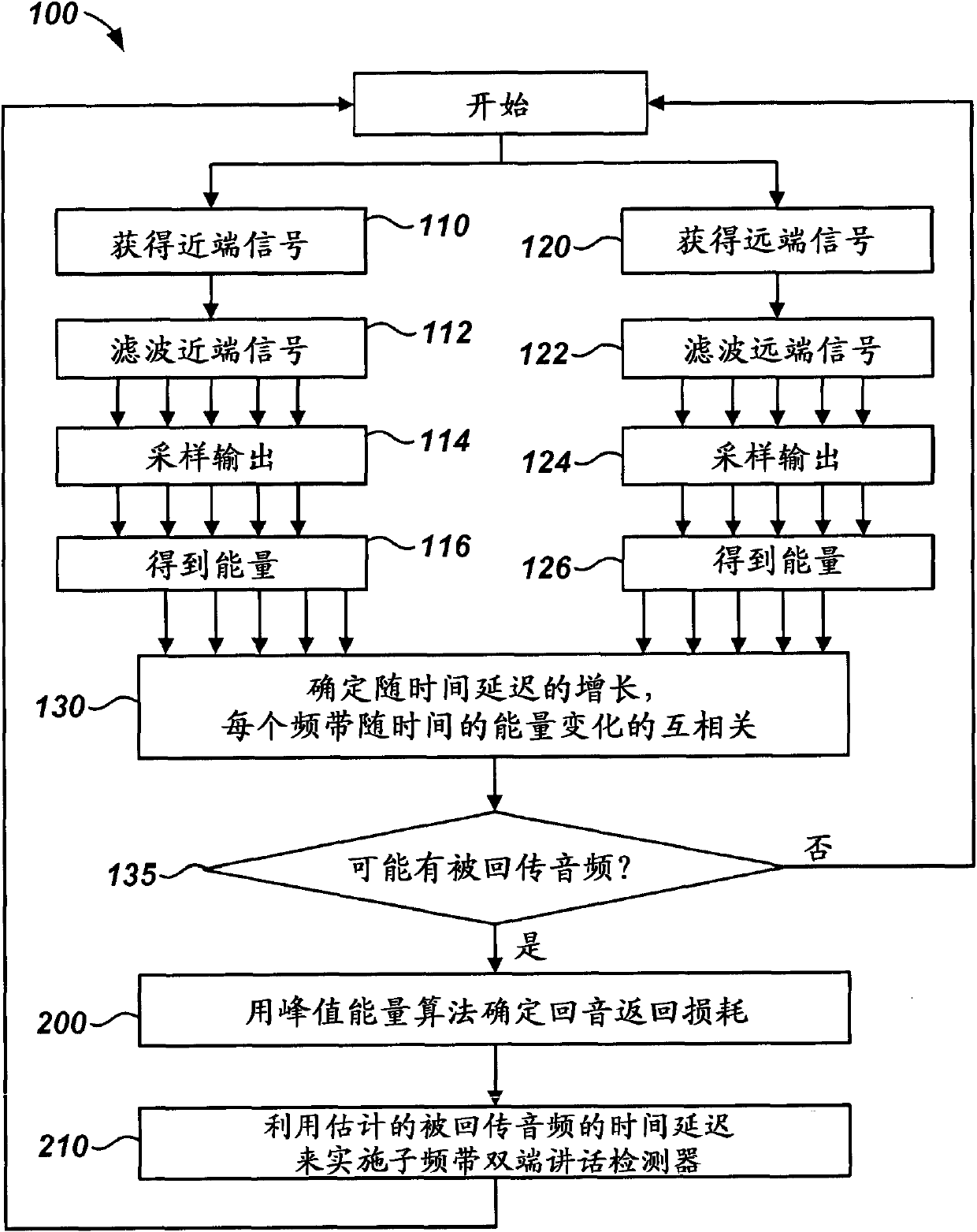Detection and suppression of returned audio at near-end
A near-end, audio technology used in echo suppressors/cancellers, interconnects, two-way PA telephone systems, etc.
- Summary
- Abstract
- Description
- Claims
- Application Information
AI Technical Summary
Problems solved by technology
Method used
Image
Examples
Embodiment Construction
[0014] A. Proximal unit with echo detection and suppression
[0015] figure 2 The near-end unit 10 shown schematically in can be used for teleconferencing or video conferencing. As previously mentioned, near-end unit 10 has audio decoder 12, audio encoder 14, speaker 20, and microphone 40, and is communicatively coupled to remote unit 16 using methods known in the art. During a conference, audio decoder 12 receives far-end audio, decodes it, and sends the decoded audio to speaker 20 for near-end participants to hear. Accordingly, microphone 40 picks up near-end audio from the participant, and audio encoder 14 encodes the near-end audio and sends it to far-end unit 16 .
[0016] In order to reduce the influence of the acoustic coupling (shown as arrow 11) at the near end, the near end unit 10 has a near end echo canceller 30, and the near end echo canceller 30 subtracts the noise that has been picked up by the near end microphone 40 through the acoustic coupling. Audio emitt...
PUM
 Login to View More
Login to View More Abstract
Description
Claims
Application Information
 Login to View More
Login to View More - R&D
- Intellectual Property
- Life Sciences
- Materials
- Tech Scout
- Unparalleled Data Quality
- Higher Quality Content
- 60% Fewer Hallucinations
Browse by: Latest US Patents, China's latest patents, Technical Efficacy Thesaurus, Application Domain, Technology Topic, Popular Technical Reports.
© 2025 PatSnap. All rights reserved.Legal|Privacy policy|Modern Slavery Act Transparency Statement|Sitemap|About US| Contact US: help@patsnap.com



